
T-Mobile AirCards & Broadband Cards
The webConnect Jet, T-Mobile’s 2nd 3G broadband card, makes a couple improvements over it’s predecessor the webConnect. While they look identical at a glance, closer inspection reveaks 2 distinct differences.
The original T-Mobile webConnect has support for international roaming. While the newer Jet does not, it packs a 8 GB microSD slot. Besides these 2 features, there’s not much of a difference (except respective colors).

In reality the webConnect Jet is not nearly as large. However, zooming in this close allows you to peek at the microSD slot off to the left.
Stuff You Should Know (Good & Bad)
Design & Aesthetics
The T-Mobile webConnect Jet borrows greatly from the webConnect. The biggest difference in appearance is the absence of green in the Jet in favor of a grey/silver chrome finish. Also, the Jet is 0.2 inches shorter (though you’ll hardly notice unless comparing side-by-side).
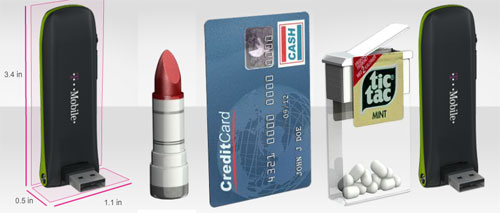
The webConnect has practically an identical build to the webConnect Jet (its successor). The only difference (though hardly noticeable) is the Jet’s 3.2″ length being a tad shorter than the 3.4″ of the webConnect above.
With a rotating ‘swivel’ USB connector, it can point horizontally as well as vertically. Also, weighing in at 1.1 ounces, it’s as heavy as 6 quarters and will feel lighter in your pocket than a wallet.
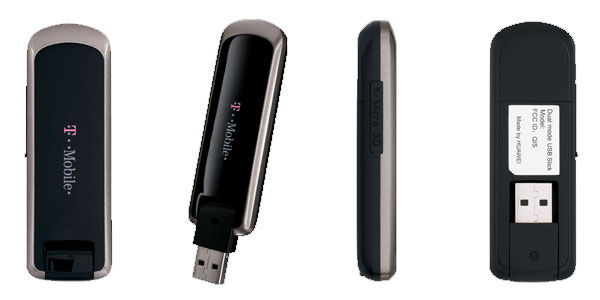
As I recommend to all MBR Buyer’s Guide readers, definitely insert similar cards vertically to avoid breaking your broadband card like I did.
My broadband card was just never the same…don’t forget you have it plugged in.
Features
Summary: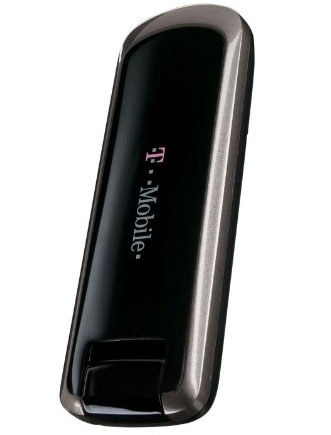
- microSD™ memory slot up to 8GB
- Automatically connects to broadband connections
- Compatible with Windows Vista and XP or Mac OS X or higher
- Dimensions: 3.2 inches (h) x 1.1 inches (w) x 0.5 inch (d)
- Weight: 1.1 ounces
- Network Compatibility: GSM, EDGE, UMTS, HSDPA
Besides the aforementioned microSD slot, the webConnect Jet doesn’t have any other major features.
While it does allow you to connect to all T-Mobile hotspots for free, this is enabled through the connection manager software and not the device itself.
What’s Speed & Coverage Like?
The webConnect Jet works on T-Mobile’s HSPDA 3G network (not it’s lightning fast HSPA+ 21 Mbps network). Here’s a synopsis of what to expect with speed and coverage depending on which network you’re on:
Since T-Mobile’s 3G coverage isn’t as large as Sprint, Verizon & AT&T, be sure to check out the 3G coverage review to see if you’re covered.
If you’re concerned about data caps then take a look at “How Much is 5GB & Is It Enough” to avoid overage charges.
Should You Get It?
If you’ve got no plans to travel internationally with your card (it’d cost you an arm and a leg anyway if you did), the webConnect Jet is available for free (aff link).
There’s one catch though…
T-Mobile’s upped the ante once again with the release of a successor to the webConnect Jet. The not so ironically named webConnect Rocket will be able to take advantage of the faster 7.2 Mbps and 21 Mbps speed upgrades that T-Mobile has underway (the Jet can get up to 3.6 Mbps).
If you’re the kind of person that likes to future-proof your device, you’ll definitely want to take a look at the webConnect Rocket.
Since you’ll be in a contract for 2 years, it only makes sense to be prepared for what’s in store.
Related:
T-Mobile webConnect Rocket Review
2010 T-Mobile AirCard & Broadband Card Review
2010 Broadband Card Comparison

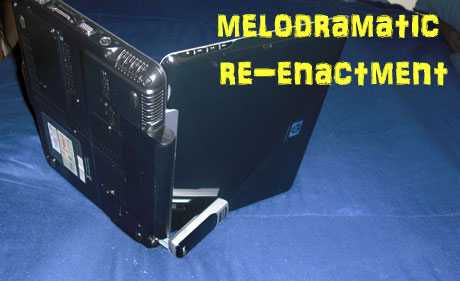
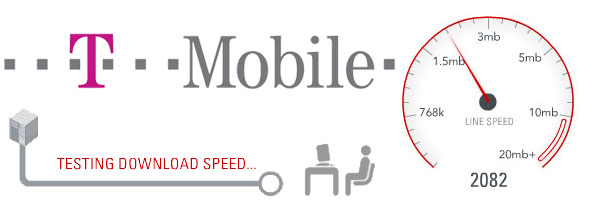
CJ says:
well after fighting with t-mobile for 3 1/2 weeks i just found out this card has problems that they do not know how to fix! iv had it replaced 3 times the sim card replaced 1 time. iv also been told ever story under the sun from towers being down to state wide network problems whenthe hole time t-mobile knew this card is a big problem!